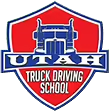
Using our top Commercial truck maintenance schedule tips and advices, you can keep your CMV in a great condition. Maintaining a heavy vehicle is a big responsibility. Any mistake and there is a huge loss, it is best practice to adopt some FMSCA preventive maintenance followups for better experience in long run.
What Is Truck Preventive Maintenance Schedule?
Preventive maintenance is a procedure of organized maintenance activities which are specifically designed to enhance the lifespan of a company's commercial vehicles through systematic and regular inspection. The preventive maintenance schedule supports the identification of technical and mechanical obstacles before they become massive and result in worthless expenditures. This truck maintenance works apart from pre- and post-inspection checklists because of its columns and bigger access to the management of commercial vehicles and fleets. The preventive maintenance program involves vigorous tasks like frequent oil changes, regular checking of spark plugs, an inspection of hoses, and several other robust tasks.
Designing a Truck Maintenance Checklist
Fundamental steps for the formulation of a program of preventative maintenance are scheduling and planning of truck maintenance checklists. There are many types of trucks so every truck has its own unique checklist based on its operations, features, and functions. A well-designed truck maintenance structure can prevent avert unnecessary problems.
- CAB: Taking into consideration the controls and safety of trucks the checklist of the cab would involve maintenance of warning alarms, warning lights, gauges on the dashboards, HVAC controls, seatbelts, and lighting switches.
- CHASSIS: Standardized chassis preventative maintenance includes regular checking of tire pressure, breaks, fuel lines, suspensions, and wheel bearings.
- UNDERHOOD: The preventative maintenance of the underhood includes verification of levels of fluid conditions, an inspection of gaskets and hoses, and authentication of circuits and pulleys.
Important Items On The Preventative Maintenance Checklist
- Regular testing of heating and air conditioning systems
- Inspection of brake systems
- Replacement of pads, rotors, shoes, and drums
- Checking fluid levels like engine oil, brake fluids, wiper fluids, power steering fluids, and transmission fluids.
- Checking of tires, wheels, and rims
- Replacement of damaged mirrors
- Replacement of air filters
- Testing of seat belts
- Checking tire quality and air pressure
- Monitoring suspension and steering systems
- Eradicating oil or suspension leaks
- Inspection of the undercarriage
- Monitoring of electrical systems connections and lightning systems
- Horn testing
- Maintenance of driveshafts
- Upkeep of belts, CV joints, and hoses
- Fixing interior and exterior damaged body of the vehicle
- Inspection of the exhaust system
- General tune-ups
Mileage-Based Maintenance Checklist
There are several methods for determining maintenance, but maintenance based on mileage is the most common.
After 10,000 miles:
- Oil and Oil filter change
- Lubrication of chassis, steering drivelines, and suspensions
- Checking Fluid levels
- Fixing belts and hoses
- Drainage of fuel filter
- Drainage of water separator
- Adjustments in air pressure
- Brake checks
- Replacement of external fuel filters
After 30,000 to 180,000 miles:
- All the above steps
- Inspection of engine air filter
- Inspection of restriction gauges
- Replacements of filters
- Replacement of cabin air filters
After 150,000 miles:
- Inspection of engine air filter
- Inspection Restriction gauges
- Replacement of filters
- Replacement of cabin air filters
After 60,000 to 180,000 miles:
- All the above
- Replacement of front and rear differential fluids
- Replacement of transfer case fluids
- Transmission of services
- Coolant Replacements
Seasonal Maintenance Checklist
In winter months the checklist can significantly enhance the life of vehicles by diminishing the elements that are exposed during these months. Here is what should be the focus during the winter months:
- Regular testing of batteries and connections
- Monitoring of DEF systems and fuel levels
- Checking for leaks in the exhaust system
- Maintenance of heater and defroster
- Drainage of water separation to prevent freezing
- Regular servicing of fuel filters
- Checking cracks on the windshield
- Replacement of wiper blades
- Ensuring an emergency kit during extreme weather conditions
- Checking pre-heater operations
- Checking block heater operations
- Inspection of tires and treads
- Fuel Inspection
- Servicing of air dryers
In summer months preventative checklist mostly focuses on air conditions and tire pressure but some other items of focus on the checklist are:
- Examination of belts and replacing them after one or two years if there is any wear or tear
- Cleaning and inspection of the cooling system
- Performing a coolant system pressure test
- Inspection of the radiator and radiator caps for corrosion
- Drainage of antifreeze
- Inspection of heater hoses
- Checking the vehicle's electrical systems
- Maintenance of batteries and battery connections
- Monitoring pressure of water pumps
- Checking for leaks
- Inspection of cooling coils
- Inspection of treads, tires, and air pressures
Utah Truck Driving School will support you in the creation of a substantial commercial vehicle maintenance program. We have immense truck driving experience and expertise in supporting you fundamentally in the program creation for the protection of your fleet.
